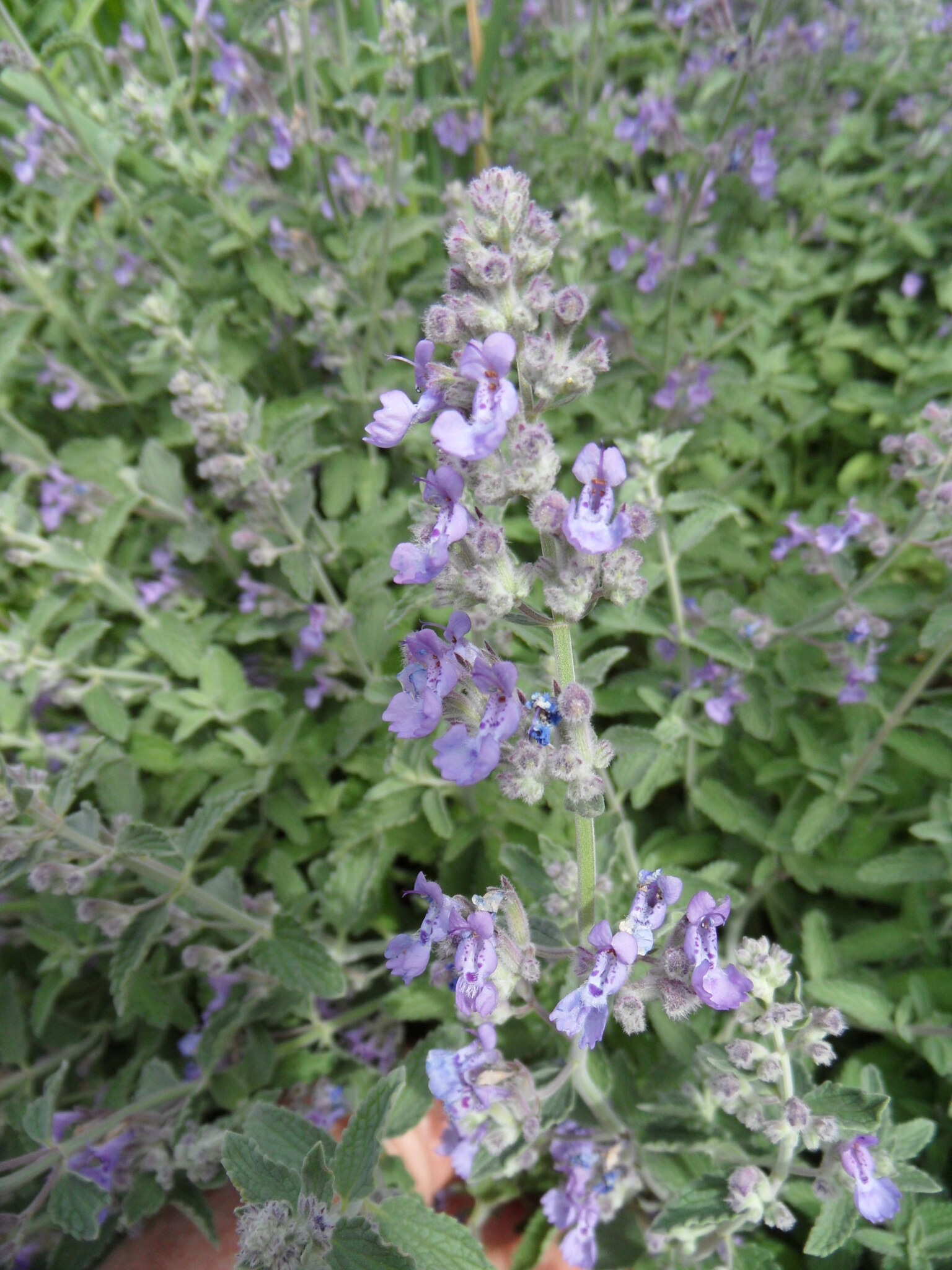
A sterile hybrid, N. nepetella × N. racemosa.
Upright to trailing herb. Leaves mostly oblong, to 3 cm long, grey-green, hairy, finely toothed, with a pungent minty scent, mostly truncate at the base. Flowers with corolla to 12 mm long, pale lavender with dark spots; spring to autumn.
Garden origin
Grown as a range of habit cultivars from upright and about 1 m tall to trailing.
Generally grown as an edging plant. N. racemosa Lam. is very similar and often confused with this hybrid; it differs in having ovate leaves with a cordate base. N. mussinii Henckel is a name used mistakenly for either N. ×faassenii or N. racemosa.
The cultivars listed under the Cultivar tab are sometimes treated as cultivars of N. racemosa or as hybrids of uncertain parentage. Blue Cat is probably a commercial name for the species although it is promoted as having darker blue flowers.
Source: (2002). Lavandula. In: . Horticultural Flora of South-eastern Australia. Volume 4. Flowering plants. Dicotyledons. Part 3. The identification of garden and cultivated plants. University of New South Wales Press.

Nepeta ×faassenii 'Little Tich'
A dwarf selection to about 15 cm tall.
Nepeta ×faassenii 'Six Hills Giant'
Plant larger than the species, the flowers in large lavender-blue clusters.
In Australia this cultivar is sometimes known as N. 'Blue Hills Giant' which is probably an Australian corruption of N. 'Six Hills Giant'.
Plant low, trailing; flowers white.
Nepeta ×faassenii 'Walker's Low'
To about 75 cm tall with arching stems.
N. 'Walker's Blue' is sometimes listed.